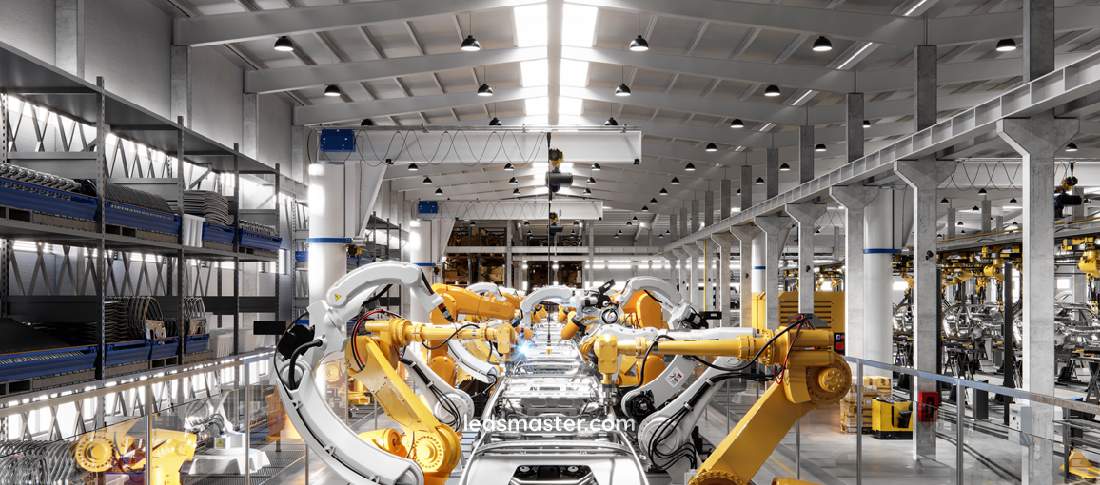
Whether you’re brightening a cozy living room, designing a productive office, or setting the perfect ambiance for a grand event, understanding the essentials of lighting can make all the difference. From the science of brightness and color temperature to the art of creating a balanced, inviting atmosphere, discover how the right lighting solutions can enhance both form and function in every setting. Dive in to explore the transformative power of light and how it shapes our daily experiences.
Get your complimentary lighting design today
Lighting is an integral aspect of our daily lives, affecting everything from visibility to ambiance. Among the various advancements in lighting technology, LEDs stand out for their efficiency and versatility. This article provides a comprehensive overview of general lighting principles, with a particular focus on LED technology, including key factors such as uniformity, lux, number of lights, power consumption, color temperature, anti-glare features, and light pollution.
Table of Contents
ToggleLighting serves a fundamental purpose in enhancing visibility and comfort across different environments. It is categorized into three primary types: ambient, task, and accent lighting. Ambient lighting provides general illumination, ensuring that spaces are adequately lit for everyday activities. Task lighting focuses on specific areas where detailed work is performed, such as reading or cooking. Accent lighting, on the other hand, highlights particular features or objects, adding visual interest and depth to a space. Understanding these types helps in creating well-balanced lighting schemes that enhance both functionality and aesthetics.
Uniformity is a key consideration in lighting design. It refers to the even distribution of light across a given area, ensuring that there are no excessively bright or dark spots. Good uniformity is essential in spaces like offices and warehouses, where consistent illumination enhances productivity and safety. By achieving uniform light distribution, one can avoid the issues of harsh shadows or glare that can disrupt tasks and comfort.
Lux is a measure of illumination that indicates how much light is received on a given surface area. Proper lux levels are vital for different applications. For example, workspaces may require higher lux levels to ensure tasks are performed accurately, while residential settings might need lower levels for comfort and relaxation. LED lighting allows for precise control over lux levels, making it easier to tailor lighting to meet specific needs and preferences.
The number of lights required in a space depends on its size and the desired illumination level. Calculating the appropriate number of fixtures is essential to avoid both under-lighting and over-lighting. Proper illumination ensures that the space is evenly lit, enhancing visibility and comfort. LEDs are advantageous in this regard because they provide high illumination levels with fewer fixtures compared to traditional lighting technologies, making them efficient and cost-effective.
Power consumption is another crucial factor in lighting design. LEDs are known for their low power consumption, converting a high percentage of electrical energy into light rather than heat. This efficiency leads to reduced energy bills and a smaller environmental footprint. When selecting LED fixtures, considering their power ratings helps ensure that they meet both lighting and energy efficiency goals.
Color temperature affects the quality and ambiance of light. Measured in Kelvins (K), color temperature ranges from warm white to cool white. LEDs are available in various color temperatures, allowing users to select the lighting that best suits their needs. Warm white light (around 2700K) creates a cozy atmosphere ideal for living spaces, while cool white light (over 5000K) provides clear illumination suitable for work environments and commercial settings. Choosing the right color temperature can significantly impact the mood and functionality of a space.
Glare can be a significant issue in lighting design, causing discomfort and reducing visibility. Anti-glare features in LED lighting fixtures help minimize direct exposure to bright light sources, enhancing visual comfort. These features may include diffusers, reflectors, and specially designed lenses that distribute light more evenly and reduce harsh reflections. Proper glare control is crucial in work environments and public spaces, where comfort and safety are paramount.
Light pollution, resulting from excessive or misdirected artificial light, can have adverse effects on the environment and human health. It disrupts natural ecosystems, affects wildlife behavior, and interferes with astronomical observations. LEDs can help mitigate light pollution when properly designed and installed. Features such as directional lighting and shielding reduce the amount of light that escapes into the sky and unintended areas. Additionally, the energy efficiency of LEDs reduces waste heat, contributing to overall environmental sustainability. LEDs contain no hazardous materials like mercury, found in fluorescent lights, and their long lifespan and low maintenance requirements further reduce environmental impact.
LED lighting’s versatility and efficiency have led to its widespread adoption across various applications. In residential settings, LEDs are used for general illumination, task lighting, and decorative accents. They offer high-quality light while consuming less energy, making them ideal for lighting living rooms, kitchens, and outdoor areas. LED bulbs and fixtures are available in a range of color temperatures and can be integrated into smart home systems for enhanced control.

In commercial and industrial environments, LED lighting is preferred for its cost-effectiveness and performance. LED high bay lights are commonly used in warehouses, factories, and manufacturing facilities due to their durability and high lumen output. In retail environments, LED lighting enhances the shopping experience by providing bright, clear illumination that highlights products effectively. This capability improves product visibility and attractiveness, influencing customer decisions.
Outdoor applications also benefit from LED technology. Street lights, parking lot lights, and landscape lighting have all seen improvements with the adoption of LEDs. Their resistance to weather conditions and long lifespan make them suitable for various outdoor environments. Proper design and installation of outdoor LED fixtures help reduce light pollution and improve safety in public spaces.
Lighting is a critical element in creating functional, comfortable, and aesthetically pleasing environments. The advent of LED technology has significantly improved lighting solutions, offering benefits such as energy efficiency, long lifespan, low heat output, and environmental sustainability. Key factors in lighting design, including uniformity, lux levels, number of lights, power consumption, color temperature, anti-glare features, and light pollution considerations, all contribute to the effectiveness of lighting systems. By understanding these factors and leveraging the advantages of LED technology, one can achieve optimal lighting solutions that enhance both the functionality and experience of any space.